
hotline:
17715390137
Tel/Wechat:
18101240246 (Technology)
0512-68565571
Email:mxenes@163.com (Sales Engineer)bkxc.bonnie@gmail.com
Scan the code to follow or search the official account on WeChat:
2D Materials Fronrier After paying attention,
click on the lower right corner to contact us,
Enter enterprise WeChat.
Professional Services Online

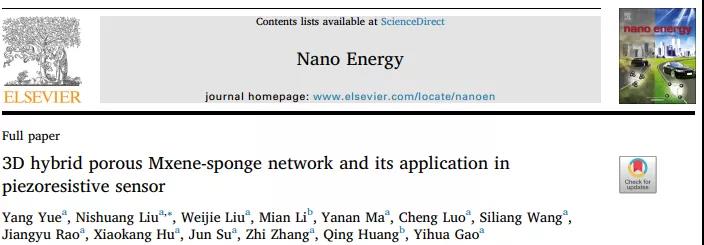
[Background introduction]
With the rapid development of wearable electronic devices, flexible pressure sensors have attracted much attention due to their potential applications in motion detection, biomedical monitoring, and human-computer interaction. Pressure sensors are usually classified into four types according to the working mechanism: piezoelectric type, capacitive type, friction type and piezoresistive type. Among these different types of sensing types, piezoresistive sensors can convert applied pressure into changes in current or resistance and have been studied intensively. Piezoresistive sensors exhibit various advantages such as high sensitivity, fast response, simple manufacturing process, and low energy consumption. Microstructure designs, such as porous structures, hollow sphere microstructures, micropyramid arrays, fracture microstructures, and interlocking microstructures, are generally considered to be effective strategies for manufacturing pressure sensors. However, the design and manufacturing process of most microstructures is expensive and complicated. Therefore, low-cost, large-scale preparation of sensitive pressure sensors remains a challenge.
[Introduction]
Recently, Professor Liu Ruishuang of Huazhong University of Science and Technology reported a MXene sponge made by a simple and effective dip coating process, and applied it to a piezoresistive sensor with insulating polyvinyl alcohol (PVA) nanowires as spacers. . The MXene sponge-based sensor has high sensitivity over a wide pressure range with a minimum detection limit of 9 Pa, a response time of 138 milliseconds, and excellent durability in 10,000 cycles. The MXene sponge sensor monitors human physiological signals (such as breathing, joint movement and pulse) in real time. The potential applications of sensors in measuring pressure distribution and human-computer interaction are also discussed.
The results are published online in Nano Energy: 3D hybrid porous MXene-sponge network and its application in piezoresistive sensor.
[Graphic introduction]
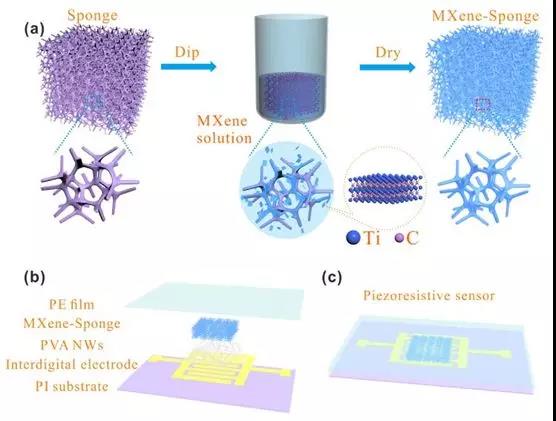
Figure 1: A) Schematic diagram of the manufacturing process of MXene sponge. b, c) Schematic diagram of the manufacture of sensors based on MXene-Sponge / PVA NWs.
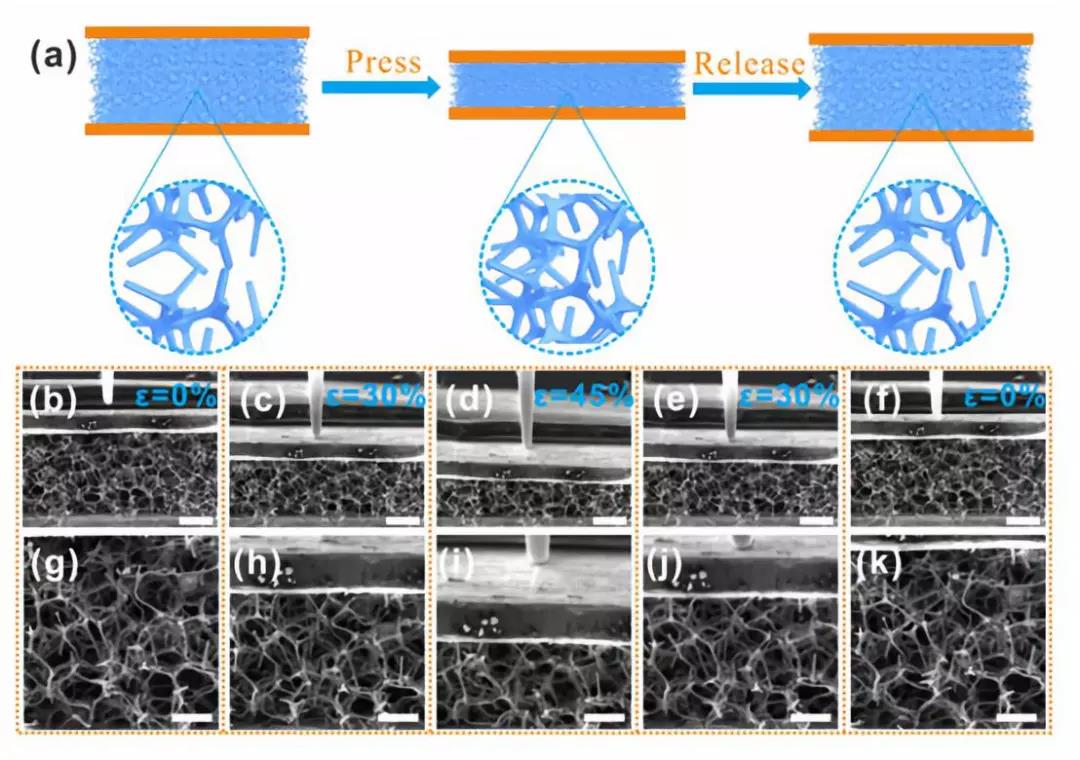
Figure 2. Microstructure model of MXene sponge and in-situ SEM image of dynamic process in FIB-SEM. a) A pressure sensing model of the MXene sponge sensor showing a change in contact area of the fiber network with compression set. B-f) The various SEM images of the MXene sponge were in the original state, the compression state was 〜30%, the compression state was 〜45%, the release state was 〜35%, and the release was completed. The scale bar is 200 μm. G-k) Various magnified SEM images of MXene sponges corresponding to b-f, respectively. The scale bar is 100 μm.
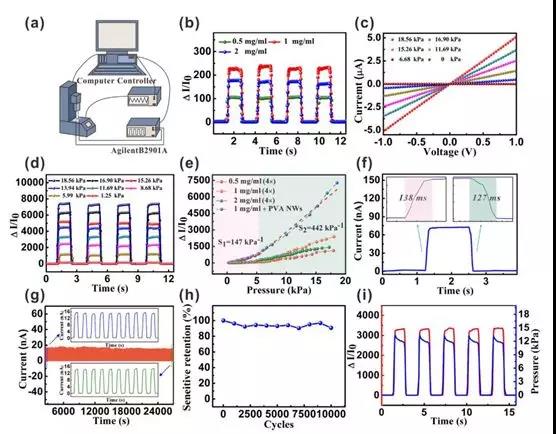
Figure 3. Sensing performance of MXene sponges and MSP-based sensors. a) Schematic diagram of the experimental setup. b) I-T curves of MXene sponge sensors at different concentrations of MXene (0.5 mg / ml, 1 mg / ml and 2 mg / ml) at the same pressure. c) I-V curve of MSP-based sensor at a concentration of 1 mg / ml MXene. d) The I-T curve of the MSP device under various applied pressures. e) Based on the sensitivity of the MXene sponge and MSP sensor, it has a high sensitivity of 147 kPa-1 in 5.37 kPa and a high sensitivity of 442 kPa-1 in a large pressure region. f) Response time and recovery time of the MSP device. g) The stability performance of the pressure sensor after loading and unloading 10,000 times. h) After 10,000 loading and unloading, the sensitivity remains above 90% of its original value. i) The relationship between the I-T and P-T curves.
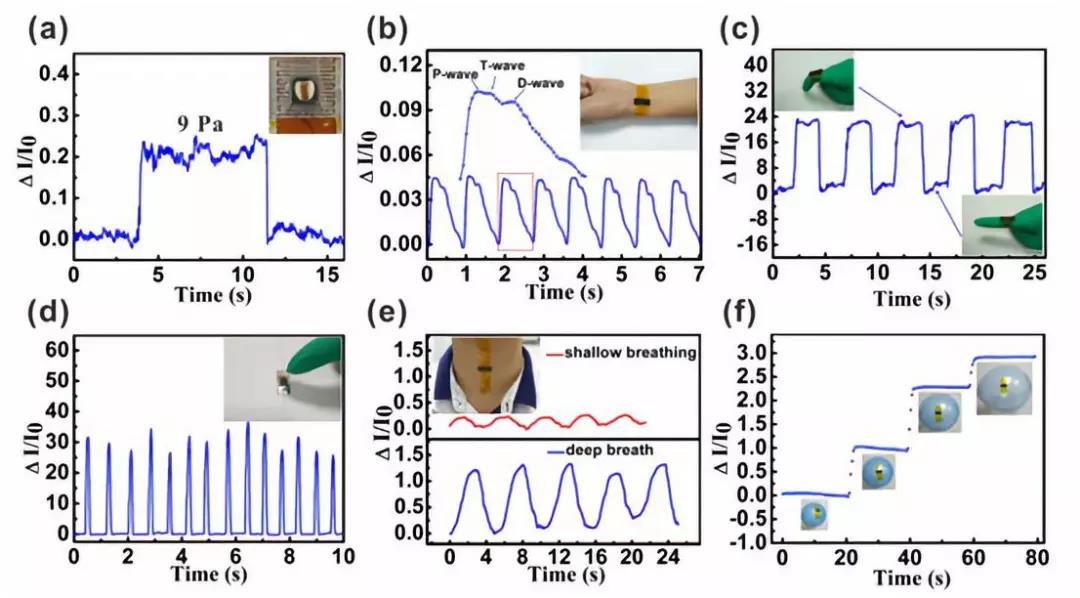
Figure 4 uses MSP sensors to monitor small pressures, human physiological conditions, and balloon size changes in real time. b) Pulse test c) Bend d) Finger touch. e) Changes in equipment attached to the throat muscles. f) The size of the balloon containing the MSP sensor changes when blown at various pressures.
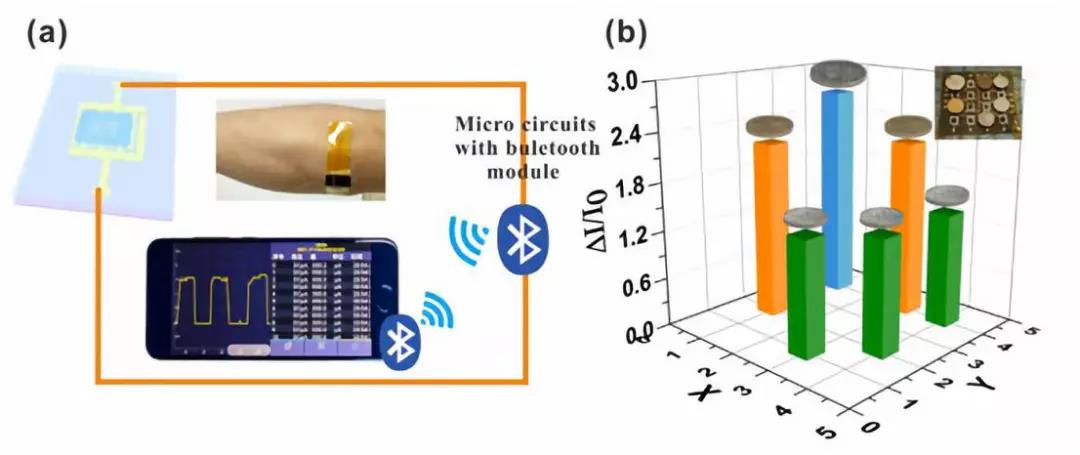 Figure 5 a) The MSP sensor is connected in series with the circuit embedded in the Bluetooth system, which transmits the current signal to the handset. b) Detecting various lightweight objects distributed over the pixel sensor array.
Figure 5 a) The MSP sensor is connected in series with the circuit embedded in the Bluetooth system, which transmits the current signal to the handset. b) Detecting various lightweight objects distributed over the pixel sensor array.
[Summary of this article]
The MXene sponge was fabricated by a simple and effective dip coating process and applied to a piezoresistive sensor with an insulating PVA NW as a spacer. This MSP-based sensor has high sensitivity over a wide pressure range (147 kPa-1 for areas less than 5.37 kPa and 442 kPa-1 for areas 5.37-18.56 kPa), low detection of 9 Pa Limit, fast response time and excellent durability in 10,000 cycles. Based on the above-mentioned good performance of the device, its potential application in monitoring health activities and measuring pressure distribution was also studied.
Literature link:
Https://doi.org/10.1016/j.nanoen.2018.05.020
Source: WeChat public account MXene Frontier

| Reminder: Beijing Beike New Material Technology Co., Ltd. supplies products only for scientific research, not for humans |
| All rights reserved © 2019 beijing beike new material Technology Co., Ltd 京ICP备16054715-2号 |